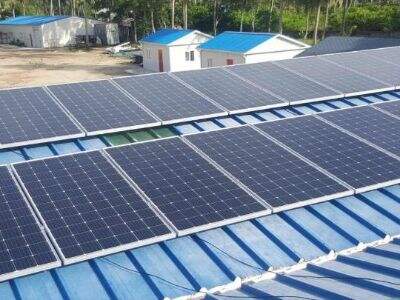Da li razmišljate da ćete dodati solarne ploče na svoj dom? A danas ćemo vam prikazati kako to učiniti uz pomoć stručnjaka iz ALLRUN-a.
Nađite idealno mesto za sunčevu energiju
Kada razmišljate o instaliranju solarnih ploča kod kuće, tačna lokacija može biti od odlučujuće važnosti. Želite pronaći mesto gde će ploče dobiti dovoljno sunčeve energije tokom dana. Tražite mesta na krovu ili u vrtu koja nisu u senci stabala ili zgrada. Što više sunca ploče primaju, to više električne energije mogu proizvesti za vaš dom.
Priprema krova ili tla
Kada pronađete najbolje mesto za ploče, sada je vreme da pripremite krov — ili tlo, ako su ploče planirane tamo. Solarni panel će biti instalirano — spremno za njih. Uverite se da je područje čisto od smeća i da nema nikakvog otpada koji bi mogao da blokira ploče od sunca. Ako stavljate ploče na krov, uverite se da je vaš krov u dobroj kondiciji i da ne treba nikakve popravke pre nego što počnete. Trebati ćete čvrstu, sigurnu površinu na koju ćete postaviti svoje ploče.
Povezivanje solarnih ploča i vedenje kabla.
Kada pripremite područje, sada je vreme da spojite i povežete svoje monokristalni solarni paneli . To zahteva da priložite ploče jedna na drugu, a zatim i na misterioznu mašinu nazvanu inverter. Inverter pretvara sunčevu energiju u struju koju vaš dom može koristiti. Ključno je da sve ispravno izvedete kako biste osigurali da ploče dobro funkcionišu i da sprečite bilo kakve električne probleme. Ako niste sigurni da znate kako to da uradite, najbolje je da pitate pomoćnika koji to zna.
Sigurnosni aspekti pri montaži sistema
Želite da držite svoje solarne ploče u najboljem stanju, pa morate koristiti montažne sisteme koji mogu da izdrže različite klimatske uslove. Montažni sistemi se razlikuju u zavisnosti od toga da li instalirate ploče na krovu ili na tlu. Upravljački sistemi: Ovi sistemi služe da zaključe ploče i zaštiti ih od jakih vetara i loše vremena. Odgovarajući montažni sistem može da vaše solarni paneli radaju bolje i duže traju.
Kako izvršiti proveru i čišćenje solarnih ploča
Da biste se uvijek uvjerili da vaše solarne ploče pravilno rade dugi period, trebalo bi da ih pregledate i čistite svakih nekoliko mjeseci. Drugim riječima, čišćenje tih ploča kako bi se uklonila štapa ili prašina. Takođe ćete želeli da ispitate Žice i veze kako bi provjerili jesu li oštećene ili pošarene. Održavanje ovih rasporeda pregleda pomoći će vašim solarnim pločama da duže traju — i nastave da vam i vašoj kući pružaju čistu energiju.
 EN
EN
 AR
AR
 BG
BG
 HR
HR
 CS
CS
 DA
DA
 NL
NL
 FI
FI
 FR
FR
 DE
DE
 EL
EL
 HI
HI
 IT
IT
 JA
JA
 KO
KO
 NO
NO
 PL
PL
 PT
PT
 RO
RO
 RU
RU
 ES
ES
 SV
SV
 TL
TL
 IW
IW
 ID
ID
 SR
SR
 UK
UK
 VI
VI
 HU
HU
 TH
TH
 TR
TR
 AF
AF
 MS
MS
 GA
GA
 BE
BE
 IS
IS
 EO
EO
 MY
MY
 KK
KK
 UZ
UZ


